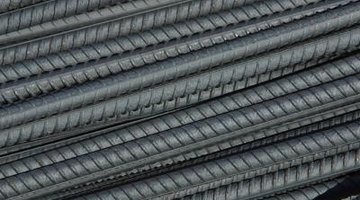Specifications on an M20 X 2.5 Stainless Steel Threaded Rod
In the United States, most measurements outside healthcare, science and some forms of manufacturing are made based on SAE regulations. In nearly every other country measurements and manufactured items are created using the metric system. When making a repair or parts replacement on an imported object, you may need to use a metric threaded rod instead of the standard U.S. measurements.
Size

Metric bolts and threaded rods follow a strict naming system. In M20 x 2.5, for example, the M stands for "metric" and the number directly after, in this case 20, is the outer diameter of the rod. This means any threaded rod listed an M20 has a diameter of twenty millimeters, and unless specified also has the same thread size and pitch as any M20 nut.
Thread Pitch
The thread pitch of a metric threaded rod is also found in the name. For example, in M20 x 2.5 the last number is the thread pitch, in this case 2.5 millimeters. Thread pitch is the measurement of the distance between one thread and the next at any given point on the rod. In this example, each thread, when measured parallel to the rod, is 2.5 millimeters away from the nearest thread.
Length
In the naming designation of a metric bolt or rod, length is described in a third number. When purchasing or measuring a threaded rod, the length in millimeters will be appended to the end of the size measurement. For example, an M2 x 2.5 threaded rod measuring thirty millimeters will be labeled as M20 x 2.5 x 30.
Stainless Steel
Stainless steel is a slightly softer metal than regular steel and has a bright and shiny silver appearance. The benefit of stainless steel is its resistance to oxidation, making it an optimal choice in an outdoor environment or a kitchen or bathroom where moisture is often present in the air. Take care when using stainless steel, however. Because it is softer than regular steel, applying the same amount of torque as on a standard rod may twist or snap a stainless rod.
References
Writer Bio
Marie Clay began writing professionally for an advertising firm in 2004. She holds a Bachelor of Science in mass communication from Illinois State University, where she was named Outstanding Honors Student for her graduating class and holds a third-degree black belt in Taekwondo with the World Taekwondo Federation. Her specialties include interactive media, art, computer software and programming, and parenting.
Photo Credits
- Jupiterimages/Photos.com/Getty Images
More Articles



